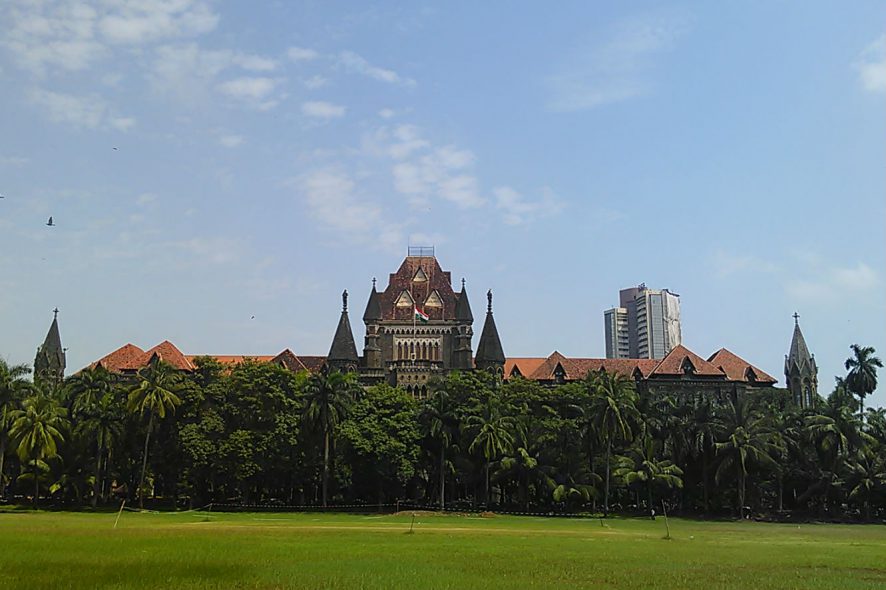Bombay High Court: A Full Bench of Dipankar Datta, CJ and R.K. Deshpande and Sunil B. Shukre, JJ., answered the question referred by the Division Bench of this Court with regard to, “Whether a convict who has challenged his conviction under Section 374 of the Code of Criminal Procedure, 1973 is entitled to the benefit of Section 436 A of the Code?”
Court answered in negative and held that the benefit under Section 436-A of the Code of Criminal Procedure is only for the undertrial prisoners.
Bench has been asked to answer a question referred by the Division Bench of this Court in a criminal application wherein applicant sought bail under Section 436-A of Code of Criminal Procedure.
Background of the Case
In 2016, the applicant was convicted for the offences punishable under Sections 506-II, 450, 326, 452, 354-A read with Sections 34, 149, 109 and 114 of the Penal Code, 1860 and also under Section 66E of the Information Technology Act, 2000.
The application was rejected by the Division Bench of this Court by its order passed on 18-11-2016.
On two occasions, the applicant failed to get any reprieve.
Now, the applicant has again renewed his effort to secure his release on bail during the pendency of the appeal, this time on a new ground he sees as available to him in Section 436-A of the Code.
Applicant relies upon Pradip v. State of Maharashtra, 2019 SCC Online Bom 9768 and Mudassir Hussain v. State, 2020 SCC Online J&K 381, and also a few more Judgments.
Question framed by the Division Bench is as under:
“Whether a convict who has challenged his conviction under Section 374 of the Code of Criminal Procedure, 1973 is entitled to the benefit of Section 436 A of the Code?”
Applicant’s Counsel, R.K. Tiwari submitted that the provision of Section 436-A of the Code is beneficial in nature and therefore it deserves liberal interpretation.
If the provision is liberally constructed, it would bring big relief to the convicts whose appeals filed under Section 374 of the Code are pending for final disposal for long years.
Additional Public Prosecutor, T.A. Mirza submitted that language of Section 436-A of the Code is clear and unequivocal admitting of no two interpretations and therefore the rule of liberal construction has no application here.
Decision and Analysis
The situation which went into the birth of Section 436-A was of undertrial prisoners, the primary concern being of their incarceration in jail for a long period of time pending investigation, inquiry or trial, even though the presumption of innocence till found guilty was operating in their favour.
By introducing Section 436-A to the Code, an endeavor was made to remedy the condition of torture and misery of accused persons as undertrial prisoners, relegated to dark corners within jails, away from the hustle and bustle of life activity without jails.
Liberal Construction
The benefit intended to be given by Section 436-A CrPC is for a person who has, during the period of investigation, inquiry or trial under the Code of an offence not being an offence for which capital punishment has been prescribed as one of the punishments, undergone detention for a period extending up to one half of the maximum period of imprisonment specified for that offence under that law.
Benefit under the section has been intended to be given only to the undertrial prisoners.
Sunil B. Shukre, J., answered in negative to the referred question, further stated,
“To be specific, we answer the question in terms that a convict who has challenged his conviction under Section 374 of the Code, is not entitled to the benefit of Section 436-A of the Code.”
R.K. Deshpande, J., while in agreement with the above-stated conclusion opined that there is no absolute right to get released, conferred upon the undertrial prisoner upon fulfillment of the conditions specified under Sectio 436-A CrPC.
An accused completing the period specified under Section 436-A on the date of filing of appeal may not apply under Section 389 of the Code for suspension of sentence and grant of bail, but he can claim the release from detention even without suspension of sentence.
Therefore, to agree with the contention that the accused remain an undertrial prisoner during the pendency of the appeal and the Appellate Court is competent to exercise the power under Section 436-A of the Code.
Dipankar Datta, C.J., while agreeing with the view of learned brothersDeshpande and Shukre, JJ. stated that,
Section 436-A refers to the maximum period of imprisonment specified for the offence in question, and not to the period of imprisonment actually imposed.
Chief Justice opined that Section 436-A CrPC is restricted in its operation to grant bail to an undertrial prisoner ‘during the period of investigation, inquiry or trial’ and does not, ex proprio vigore, apply at the appellate stage.
Thus, CJ concurred with the prima facie view of the Division Bench as well as the opinion of learned brother Deshpande and Shukre, JJ.
“Spirit of Section 436-A, CrPC could be considered by an appellate court while it is seized of an application under Section 389, CrPC and, drawing inspiration from the principle ingrained in the former, to suspend execution of the sentence bearing in mind all relevant factors including the time likely to be taken for disposal of the appeal.”
Therefore, Bench held that since the Division Bench has rejected the applicant’s prayer for suspension of execution of sentence for the third time, it is highly unlikely that any further prayer in the instant matter shall be considered favourably. [Maksud Sheikh Gaffur Sheikh v. State of Maharashtra, 2020 SCC OnLine Bom 878, decided on 28-08-2020]







Very informative